Denali: The High One
At 6190m (20,310ft) Denali is the highest mountain in North America. Its arctic latitude makes for extreme weather conditions and its remote location in the Alaskan wilderness means that climbing teams must be self-reliant and experienced.
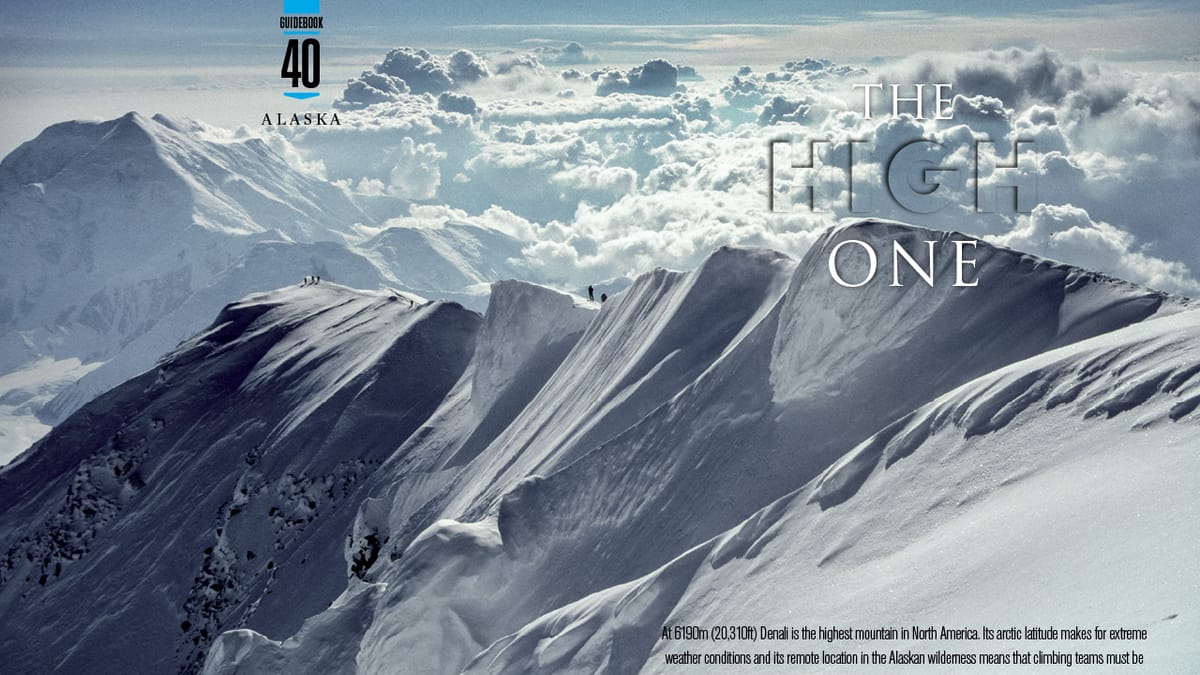
This article initially featured in issue 13 of The Outdoor Journal, you can subscribe here.
I carefully take my soft contact lense out of the little box that I kept inside my sleeping bag all night and place it upside down on my finger. My eyes don’t open enough and it won’t fall into place- it freezes solid. I put it back into the warmish fluid and try again.
It’s -40. It doesn’t matter if you measure in Fahrenheit or Celsius, this is where the two scales meet and it isn’t pretty. When I attempt to get some gear from a plastic bag, the bag tears into pieces as the soft plastic turns to brittle. I didn’t know it could do that, you learn every day, often the hard way.
“Denali” means “The high one” in Athabascan. “Bolshaya Gora”, the Russian name for the mountain means “the Big One”. Both are true, but somewhere the adjective ‘cold’ should be added for clarity’s sake.
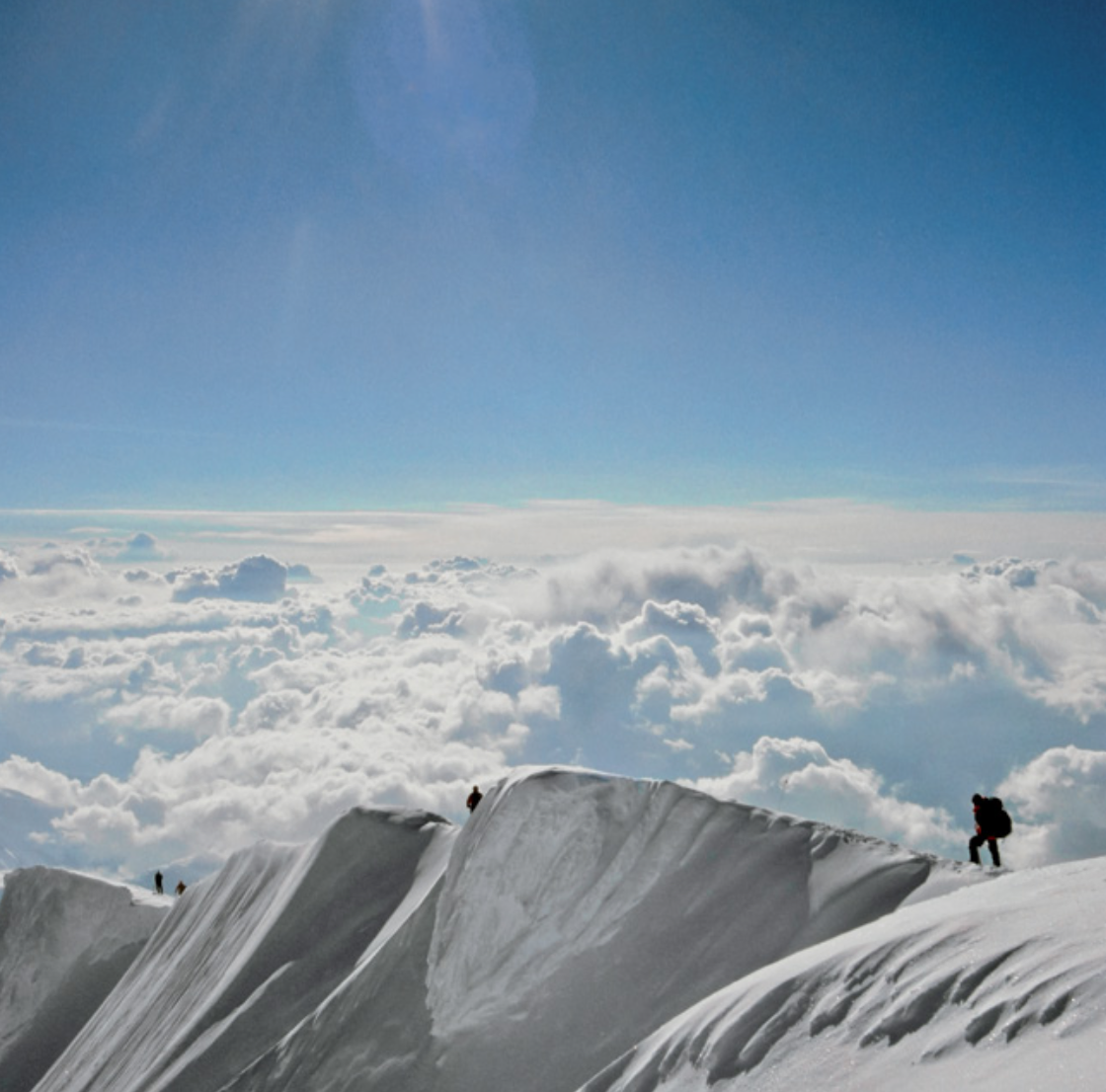
How much difference could a few weeks make, right?
It’s early May and our little two-man team is amongst the earliest of the season. Normally, most climbers try to reach the 6194m/20,320ft high point of North America (and therefore one of the fabled ‘7 summits’) in June. How much difference could a few weeks make, right?
We struggle with the sleds and fall over on the very first slope. Heartbreak Hill, it’s named as it is actually sloping down from ‘Denali International Airport’. That might seem like a good thing, but if you are bad at skiing with a 25kg/55lb backpack and a fully laden sled with no sense of direction, pushing your legs from behind, you’ll start to understand why.
Arriving at the flat landing strip that is carefully staked out between several crevasse fields that could swallow the Cessna’s whole, is an adventure in itself. The take-off from the small town of Talkeetna, Alaska (“A quaint little drinking town with a climbing problem” as the sign said) was from a small paved airstrip. All the gear, in heavy-duty North Face duffel bags, was stuffed in the rear of the small plane that sported a small sign that mentioned that in order to smoke, you’d need to step outside.
known as ‘one shot pass’- as that’s all you get.
While airborne, the pilot started hand-pumping a lever that lowered the skis over the wheels of the plane as the landing would be on terra substantially less firma. The forests and rivers of Alaska slowly changed into moraines and glaciers while the pilot seemed to be aiming directly for a collision with a small peak. Just before hitting it, we took a sharp turn and went through a small gap in the ridge, known as ‘one shot pass’- as that’s all you get.
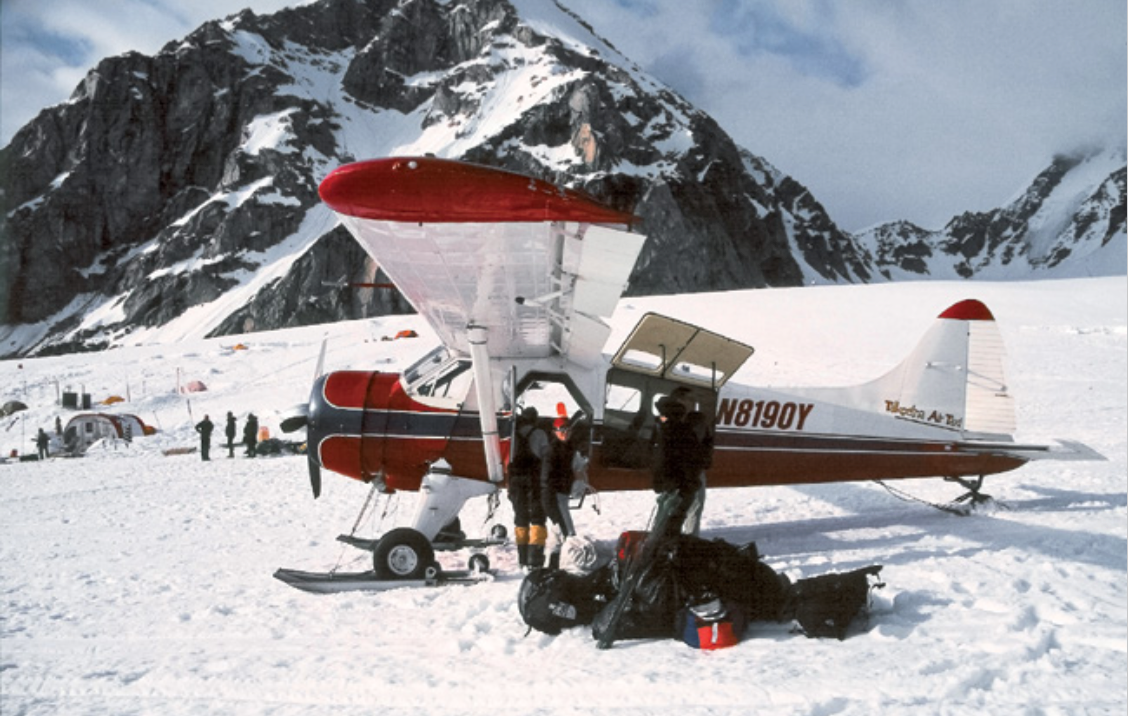
The exact distance to the bright white landing strip is hard to discern from the air, and the actual landing is a combined audio-visual skill as the beeping of the crash sensor indicates the remaining distance to the snow. The plane came to a halt quickly and we unloaded our gear, high with anticipation as we finally set foot on the ice.
As there is no running water on the mountain and you therefore need to melt all water from snow and ice, you need a lot of fuel- on average a gallon can of Coleman White Gas per person, per expedition. These cannot be transported together with persons in a plane, and therefore the park rangers organise separate flights and the cans can be picked up at Base Camp.
I had skied before, but never on touring skis and never with a sled. I thought that Denali would be as good a place to learn as any. Unless you bring your own, the sled can be rented and picked up at the landing strip as well and they normally are attached to your harness with thin ropes. The team members themselves should be connected with a climbing rope as well to maximise the chance of survival in case of a crevasse fall, so it takes a bit of puzzling to get the set-up properly wired. The rental sleds are very light, but also thin and narrow and prone to tip over when loaded with oversized duffels.
Denali is a desolate place. Besides the sleds and fuel, there are no supplies on the mountain and you should be self-supported all the way. Normally a team takes at least a spare stove or even a spare tent as they can rip, blow away or even fall in a crevasse together with the sled. A night outside would be lethal.
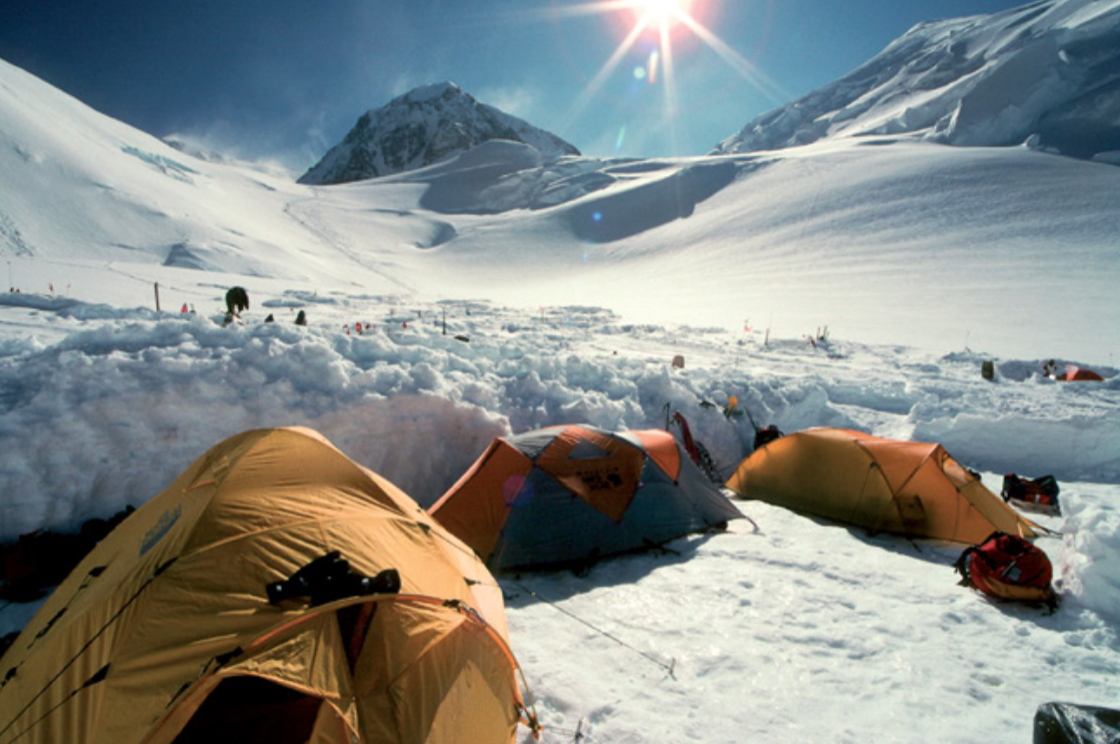
Though our team was only two persons strong, we still brought an extra tent as well as an extra stove and loads of food. The statistics showed that the average expedition lasted about 18 days, but only half of the climbers would summit, often defeated by the weather or by physical and mental exhaustion. To be sure, we brought enough food that could last us nearly four weeks if needed so we would have time to acclimatise and wait out the expected multi-day storms.
The immediate result was that our packs were heavy and our sleds were overloaded and not very stable at all. When going straight up an incline this would only mean very hard work, but unfortunately many of the slopes were to be traversed while climbing and as there were no trails of previous expeditions, the sleds kept on toppling over, creating more stress.
storms can be fierce, start without much warning, and can destroy an unprotected tent.
You could camp anywhere you wanted on the ice, but as there are many open and just as many hidden crevasses, it’s smartest to stay at one of the common camping spots. Later in the season these are easily recognisable by the many snow walls protecting the colourful tents. We can see the remains of the many snow walls, but still have to get out our snow saw and metal spade so we can cut large blocks out of the hard snow and place them in circles. There is not much wind now, but storms can be fierce, start without much warning, and can destroy an unprotected tent.
We fall asleep inside our warm down sleeping bags. After all the planning, preparation, travel and hard work of the first day on the mountain we are completely exhausted, but as happy to be in this wonderful place. From Base Camp to the summit you need to climb about 4000 meters (13,000ft), which is more than the vertical distance from Everest BC to the summit of the world.
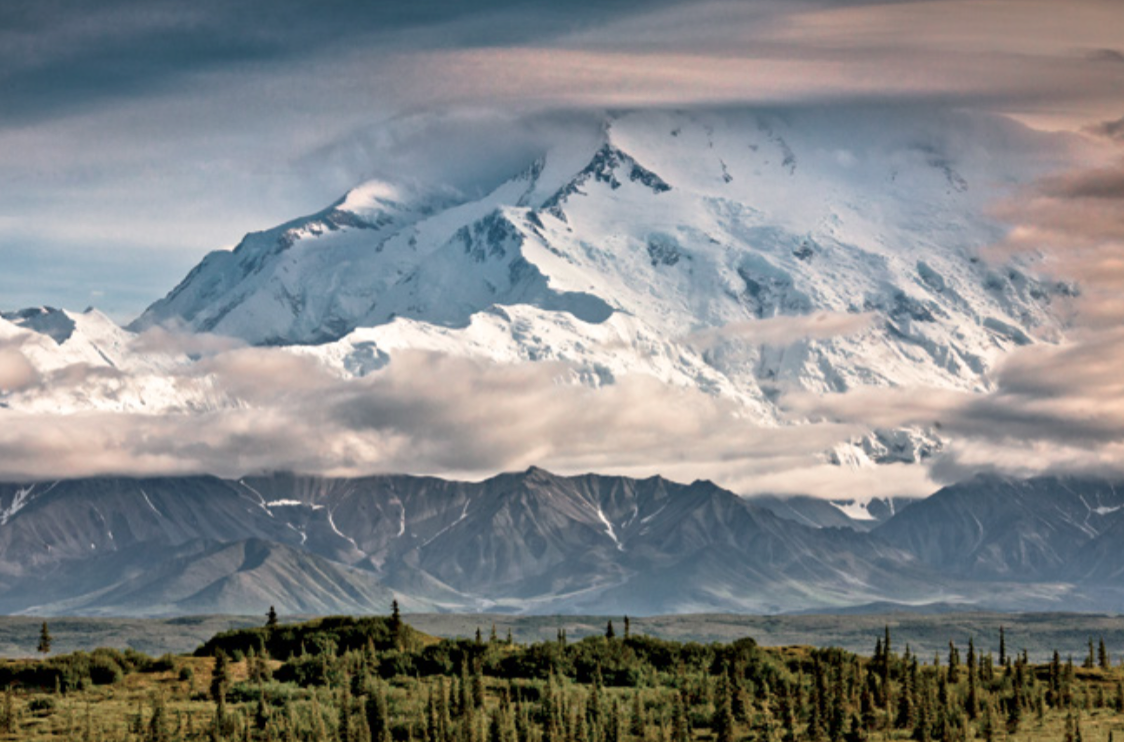
Though Denali is only a bit higher than the more accessible Kilimanjaro, the summit of Africa, the temperature and lower pressure closer to the poles make this a very different endeavour. No singing porters, no warm water to wash your face in the morning and no hot meals with popcorn unless you make them yourself. You need good knowledge of crevasse rescue, winter-camping and ice-climbing techniques. You definitely need to be in excellent physical and mental shape if you want to have a good shot at summiting and returning with all fingers and toes attached to your limbs.
We leave our skis at the bottom of Motorcycle Hill, named after the infamous races where motor bikes go up steep hills as high as possible until they topple over. This hill is not that steep, but it would be very hard if not impossible to haul the sled up wearing skis. We change to crampons and shuttle loads in our backpack from here. From now on, we do every stretch twice: once to bring part of our gear and food and again to bring up the rest. We also leave a portion of our supplies in the camp for the way back, buried in the snow and marked with our skis.
The section called Windy Corner fortunately is not that windy at all, but there are some rocks falling down the West Buttress, so we pass as quickly as we can. The next big camp is Advanced Base Camp, or ABC, at 4200m/14,000ft. Here most climbers will spend several days- acclimatising, resting or waiting for the weather to improve. The rangers have a post here and the doctors and rescue team are always busy treating frostbite and injuries from falls, if needed followed by an evacuation by helicopter.
Unlike most climbers, we also brought some non-freeze-dried food and the smell of freshly baked onions and bell peppers was enough to draw a small crowd around our tent walls.
Until now, the ‘climb’ of Denali using this Normal Route mainly consisted of a slow slog through a wonderful world. The steepest part starts right out of ABC and normally has some fixed ropes attached to minimise the bottleneck and the amount of injured climbers. The sudden rise in altitude and the heavy packs makes breathing hard, but the views over BC and Mount Foraker make it worth it.
The next section is exhilarating, you walk right along the narrow West Buttress ridge, with huge drops on either side. We pass Washburn’s Thumb, a big rock named after the pioneer climber and photographer that I would meet a few weeks later on my way out.
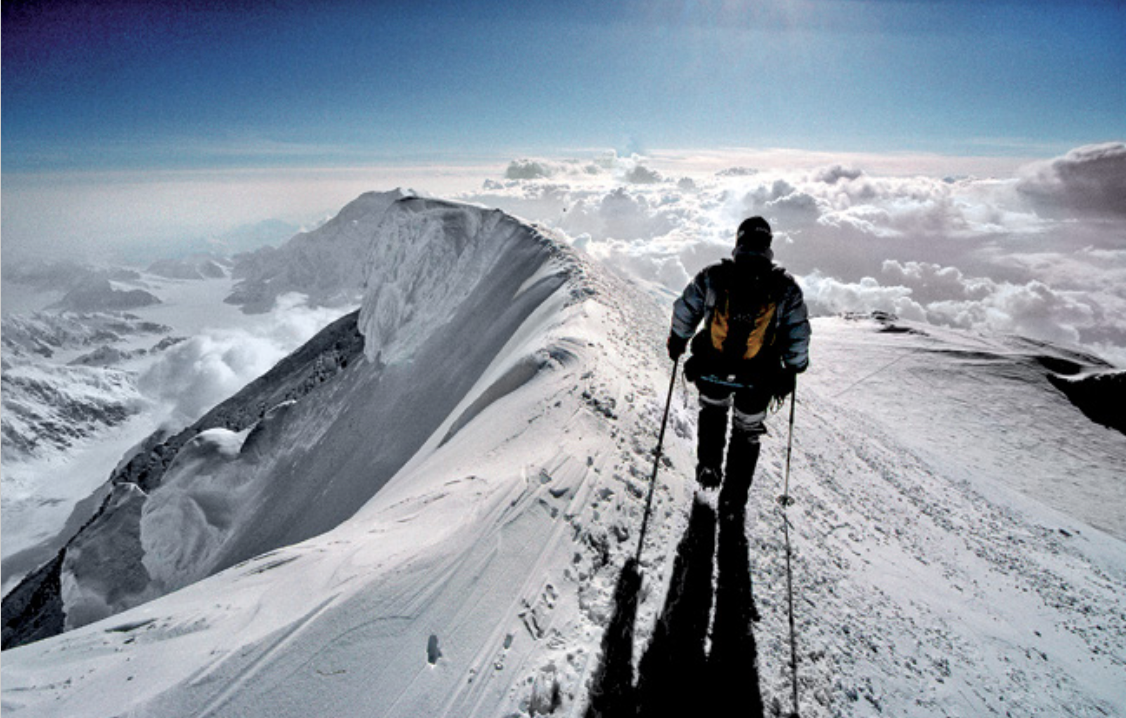
many people also prefer to go unroped as a sudden fall won’t mean you pull your partner with you
When I plant my ice-axe, I suddenly feel the earth moving. A large plate of snow and ice breaks off underneath my feet and starts falling towards the glacier. I quickly plant the point of my axe in the snow and brake with all my weight on top of it, as to avoid going in the same direction. This is why it can be good to be roped together as your climbing partner can help you; though many people also prefer to go unroped as a sudden fall won’t mean you pull your partner with you and if you are proficient in self-arrest, you should be able to stop a fall.
High camp is at 5200m/17,000ft. It is not a very pleasant place when it’s windy and cold, but when the breeze settles and the sun is out, you can enjoy your surroundings and prepare for the last section ahead.
referred to as “the Autobahn”, due to the amount of climbers that fell here.
Just outside of camp the dangerous and steep traverse to the saddle is often referred to as “the Autobahn”, due to the amount of climbers that fell here. Concentration and proper use of crampons and ice picks are paramount. Usually there are fixed ropes here, but it’s still important to know how to handle these and to be prepared for unexpected gusts of freezing wind.
From the saddle that separated the two summits of Denali we slowly continue up over an easy slope. Though it is not steep, the altitude makes walking very, very hard and we’re glad when we reach one of the last parts of the climb- the “Football Field”. This flat section leads us to a short but demanding last climb in order to gain the summit ridge which offers a great finale to this grand adventure. The ridge is not very steep, but only a foot wide in places and the views are spectacular.
After a few false summits we reach a small plateau and notice that the ridge continues downwards from here. We hug emotionally and take some quick pictures. The weather is amazing, but we both know that the descent is long and dangerous and can only relax once back in our tent.
We summited on the first summit day of the season. For us, it was day 13. We donate our big pile of excess food to newly arrived climbers and make our way down, pick up our skis and sleds and stumble down the gentle slopes, tired to the bone.
Oh yes, “Heartbreak Hill”. Now we truly understand the meaning of it as the last part back to the Base Camp is slightly but definitely uphill and it takes the last of our remaining strength. We collapse breathless in sight of the tent city that is many times the size it was two weeks ago. The pick-up is in order of arrival in BC, so we haul ourselves over to the BC manager’s tent and jot our name down. We could be picked up with little notice as a good weather spell would quickly bring in a stream of freshly-smelling climbers and we could take the plane back to civilisation.
We have no more strength to erect the tent and I sleep a few hours on top of the stack of fuel canisters until we get called. We get picked up by the blue Cessna and return via One Shot Pass to the comforts of Talkeetna, Alaska: pizza, beer and memories.





Comments ()